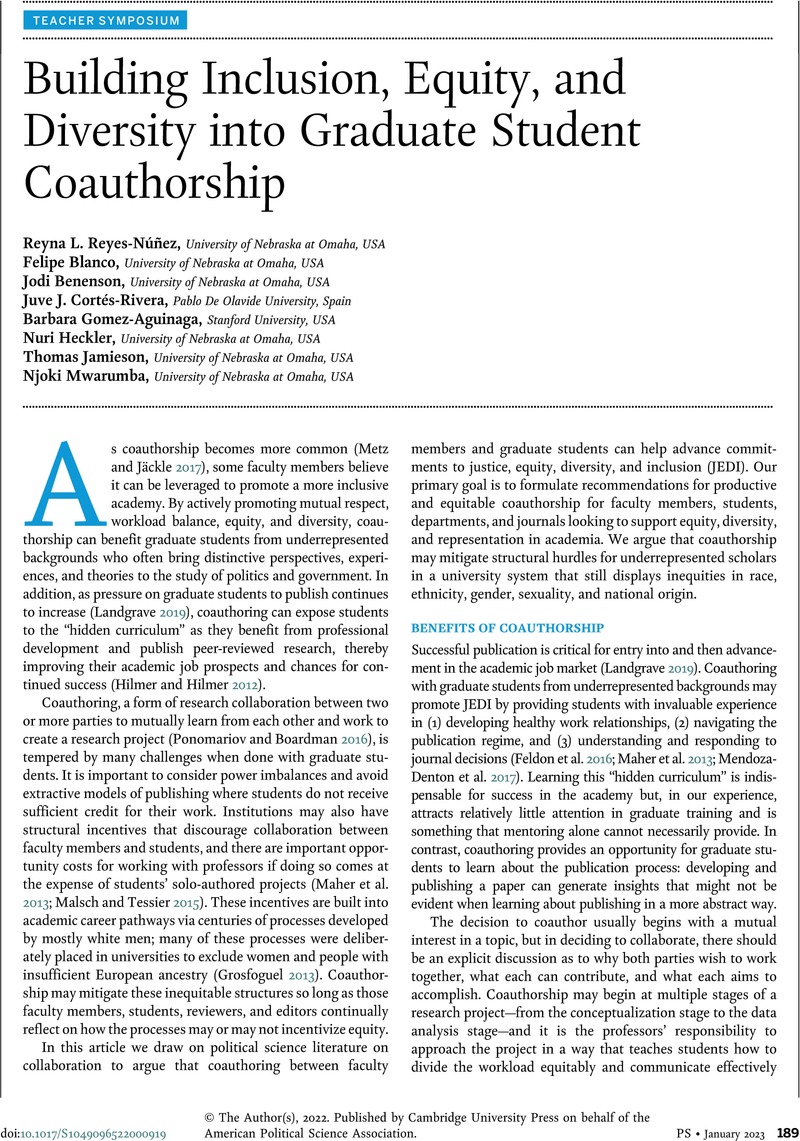Crossref Citations
This article has been cited by the following publications. This list is generated based on data provided by Crossref.
Bauer, Kelly
2023.
The Palgrave Handbook of Teaching and Research in Political Science.
p.
149.
Sweeting, Karen D.
Diaz-Kope, Luisa M.
Henley, Tiffany J.
and
Bharath, Del
2024.
Give Credit Where It’s Due: The Ethical Imperatives of Authorship Attribution in Collaborative Research.
Public Integrity,
p.
1.



